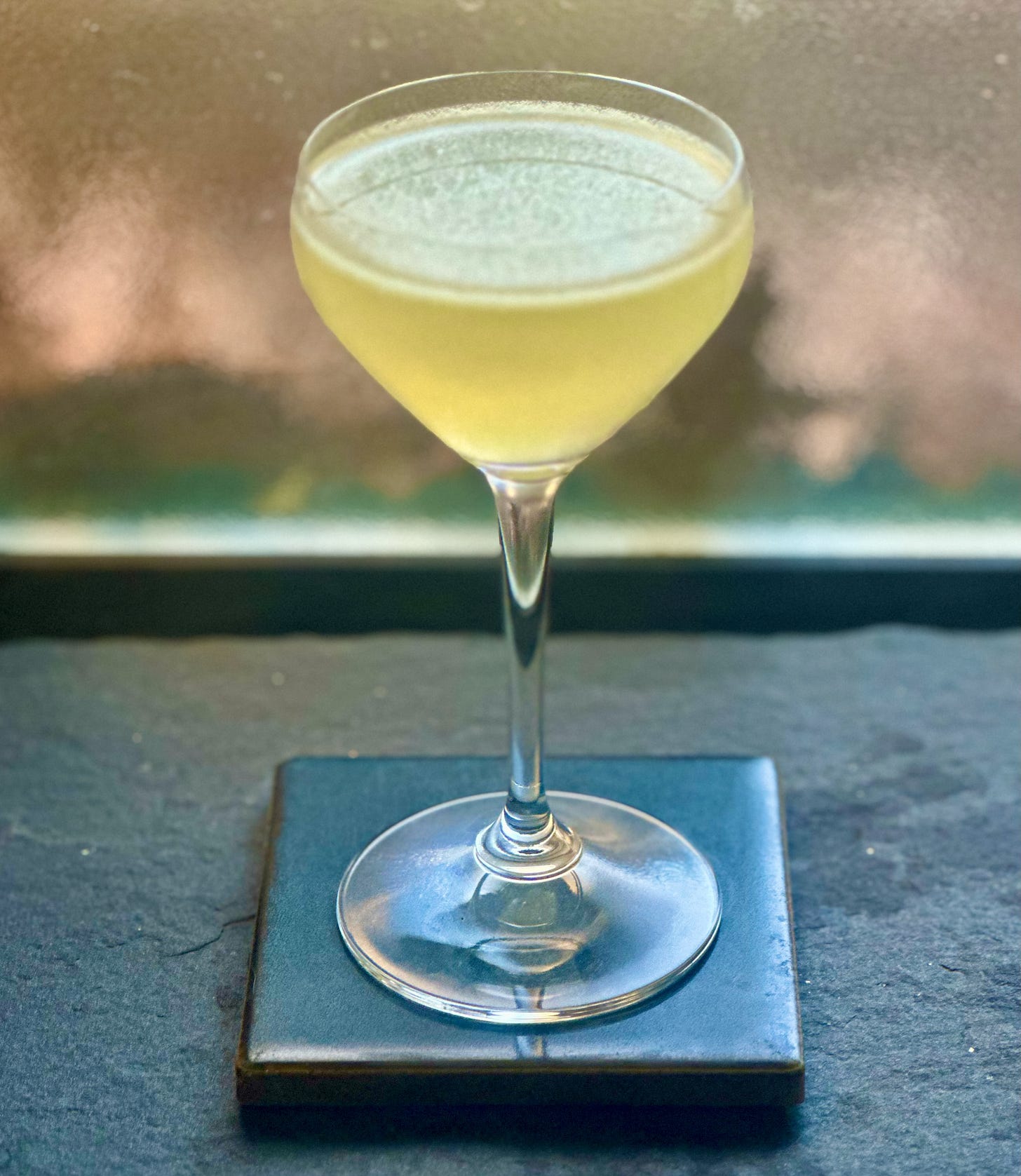I’ve been thinking about experimenting with a links section for a while. This seemed like a good week to start. This section may recur with some frequency—or you may never see it again. We’ll see!
Links About Drinks
One of the reasons why I’m so into cocktails is local culture. Washington, D.C., is a great cocktail town, with some of the best bars in the country (Columbia Room, R.I.P.) and a thriving cocktail scene. In The Dispatch, Alex Demas (a subscriber to this newsletter!) looks at the current state of the city’s cocktail culture, with a focus on Press Club, the excellent looking new cocktails-and-records bar in DuPont Circle.
Speaking of new D.C. bars, Bar Betsie, the new location from the folks behind Jane Jane, recently opened in the Union Market area. It looks very promising.
Not all of D.C.’s contributions to cocktail culture are necessarily good: As Jordan McGillis writes, new tariffs are likely to make classic cocktails considerably more expensive. (Jordan is also a reader.)
I like movies. I like cocktails. I am a bitters maximalist who enjoys bitter ingredients. So of course I enjoyed Robert Simonson’s story about how the actor who played the Wizard of Oz once owned Angostura bitters.
Wait a minute. What is snow ice?
The Case for Cocchi Americano Continues
Part of the case for Cocchi Americano is that it works well in shaken drinks too.
If people know one Cocchi Americano drink, it’s likely to be the Corpse Reviver No. 2. In its original formulation, the recipe called for an equal parts mix of gin, orange liqueur, lemon, and Kina Lillet, a fortified wine with a bitter spine—plus a few drops of absinthe.
But you can’t get Kina Lillet anymore. Yes, the Lillet brand lives on today, and some bartenders still use Lillet in the drink. But it now lacks the bitterness of its historical counterpart, having reformulated decades ago. And some histories suggest that Kina Lillet was never all that standardized anyway. Even when it was in production, the formula kept changing.
So today, many bartenders and home cocktail enthusiasts will make the drink with Cocchi Americano, which, despite some brand ownership changes, has stuck with the same gently bitter formula since the late 1800s.
Many years ago, when I first started making cocktails, I thought the Corpse Reviver No. 2 looked like a wildly complicated cocktail that relied on obscure ingredients and some sort of magical boozy alchemy. How did these four ingredients come together to make something so tasty, so intricately layered, so satisfyingly balanced?
The elegance of the equal parts construction just made it seem even more mysterious.
But over time, I realized that it’s really just a gin sour with a couple of clever splits and substitutions. It follows a clear and well-established formula that is replicable and modifiable.
So this week, we are going to break down the Corpse Reviver No. 2’s relationship to the gin sour.
And then we are going to use that same concept to make two new, original shaken drinks using Cocchi Americano—including another four-equal-parts cocktail.
Much like how the Corpse Reviver No. 2 is just a gussied-up gin sour, both of these drinks are fundamentally whiskey sours. But they’re whiskey sours laced with Cocchi Americano, which makes them a little lighter, a little more complex, and a little more interesting.
No Cynar this week, but there is Rittenhouse rye and Radiohead (a good band, not a cocktail ingredient).
Jigsaw Falling Into Place
Let’s start by breaking down the relationship between a basic gin sour and the Corpse Reviver No. 2.
Basic gin sours come in a number of ratios, but a common one is 2:1:1, with two parts gin, and one part each lemon juice and syrup, like so.
1 part syrup
1 part lemon juice
2 parts gin
We’ll use that ratio because it helps demonstrate the link between the two drinks.
That 2:1:1 ratio is for a three-ingredient drink. But it can, of course, be broken down into four parts—two of which are gin.
That looks like this:
1 part syrup
1 part lemon juice
1 part gin
1 part gin
To make a Corpse Reviver No. 2, then, all you’re really doing is making two substitutions: Instead of syrup, you’re using orange liqueur, and instead of one of the parts of gin, you’re using Cocchi Americano. (The tiny portion of absinthe is just a little grace note to give the drink a grassy, anise note.)
Gin Sour → Corpse Reviver No. 2
1 part syrup → 1 part orange liqueur
1 part lemon juice → 1 part lemon juice
1 part gin → 1 part Cocchi Americano
1 part gin → 1 part gin
N/A → a few drops of absinthe, or an absinthe rinse
In other words, to make a complex four part drink out of a simple three-part drink, you’re…
swapping (syrup for orange liqueur, which is the primary sweetener)
and splitting (one part gin for Cocchi Americano, which further boosts the sweetness and adds bitter-spice complexity).
Now you have a much more intricate, elaborate cocktail—but the basic underlying construction is actually quite similar.
You can perform the same sort of transformation with Cocchi Americano and the whiskey sour.



